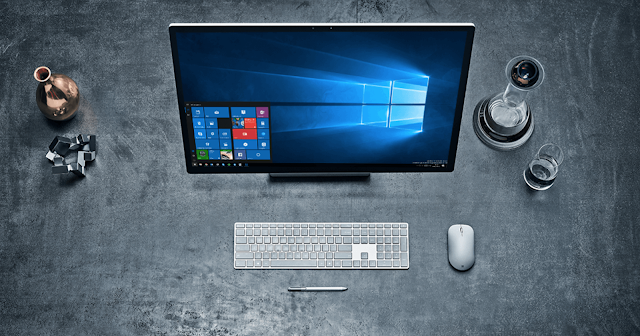 Microsoft is sticking with that mantra and approach with the release of Windows that starts rolling out this week, dubbed the Windows 10 Creators Update. And yes such updates are coming more frequently.
Microsoft is sticking with that mantra and approach with the release of Windows that starts rolling out this week, dubbed the Windows 10 Creators Update. And yes such updates are coming more frequently.Windows, of course, no longer just applies to the venerable operating system at the core of your personal computer.
These days, Microsoft says, Windows 10 is running on more than 500 million devices each month, and the Windows experience is meant to extend well beyond your traditional PC experiences.
Case in point: this latest version of Windows coincides with the simultaneous release of "Mixed Reality" reality virtual reality headsets from Acer, Asus, Dell, HP, Lenovo, and soon Samsung. Such headsets start around US$300.
Windows 10 is relevant the Xbox One crowd as well.
And Microsoft points to fresh versions of its Edge browser for iOS and Android devices, enabling you open the page you've been looking at on your phone on a Windows PC.
Android users can also take advantage of a Launcher feature, still in preview, that lets you continue working with the documents, photos and such you've been spending time with on your phone on a PC.
Not lost here is the fact that having Windows make nice with an iPhone or Android handset only underscores the recent confirmation from a top Microsoft executive that its own Windows Phone hardware is dead.
Of course, Microsoft is by no means giving up on PC hardware, and along with the new Windows, Microsoft has just unveiled the upcoming Surface Book 2 laptop, a powerful and pricey computer the company hopes will appeal to the same people who might otherwise choose a MacBook Pro from Apple.
They'll need a big budget. Surface Book 2 starts at US$1499 for a 13-inch model and carries a whopping US$2499 starting price for the 15-inch version.
In the meantime, I've been running the latest version of Windows 10 on a Surface Pro computer.
Here's some of what you can expect:
PUSHING 3DDuring its last Windows 10 update, Microsoft brought the ability to create and modify 3D objects to its venerable Paint program.
3D is now part of Office, which means you can create 3D objects for use in PowerPoint presentations, Word and Excel.
Inside PowerPoint, you can tap on a "morph" transition to move your 3D model from one slide to the next, which if you're skillful can make for a nice effect.
I had a bit of fun inside a Mixed Reality viewer where I was able to turn on the computer's camera, and place a 3D chicken on top of a real-world view.
PEOPLE FRIENDLY
Do you tend to call on the same people all the time, notably your spouse, your kids, your boss? You can pin these folks to your taskbar, and better still share pictures and other files with them just by dragging them onto the pinned contact. And you can easily call, email or Skype someone from the taskbar.
PHOTOS
Microsoft also wants you to be more creative inside the Photos app or have the app do it for you. You can automatically generate a short movie based on your videos or stills, choosing to edit it yourself after the fact. Using a Surface pen, you can draw on pictures too. Eventually you'll be able to add 3D objects and animations. Not yet.
SECURITY
Through almost every new version of Windows that I can remember, you hear about features that are supposed to safeguard your system (and I can hear the skeptics out there reminding us that through the years such measures were not always foolproof).
This time around Microsoft say it can better protect you against WannaCry and other ransomware, where an attacker takes over your computer and demands a ransom before giving you back control. I certainly hope that's the case.
Another new feature will let you recover and reset your PIN and password right from the lock screen, useful obviously if you forget it.
OTHER ITEMS OF NOTE
You've been able to mark-up and doodle on documents, photos and web pages for a while, taking advantage of the inking features inside Windows with a Surface pen. You can now annotate eBooks, or use the pen as a PowerPoint clicker (via Bluetooth) And if you tend to misplace that pen, you now have a chance of finding it through a feature that tracks its last known location.
Microsoft has added a potentially helpful currency converter to the calculator in Windows.
If you use OneNote for note-taking, you can access files on-demand from the cloud when you need them, without consuming disk space.
And through an accessibility feature for people who are unable to control a keyboard and mouse, Microsoft has added the ability to control Windows with just your eyes, using a compatible eye tracker.
HOW TO GET IT
To update to Windows, you'll need a computer with a 1GHz processor or faster, at least 1GB or RAM and 16 GB of drive space for a 32-bit system or 2GB for 64-bit, and 20 GB of drive space.
If you don't want to wait for the update to roll out automatically, you can manually get the Creators Update via the Update Assistant on Microsoft's software download site.



